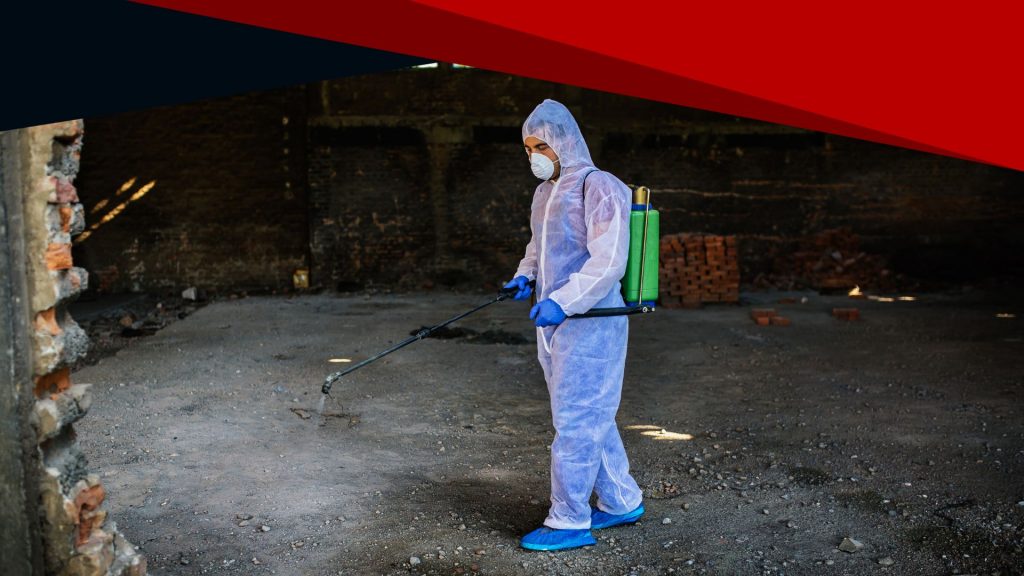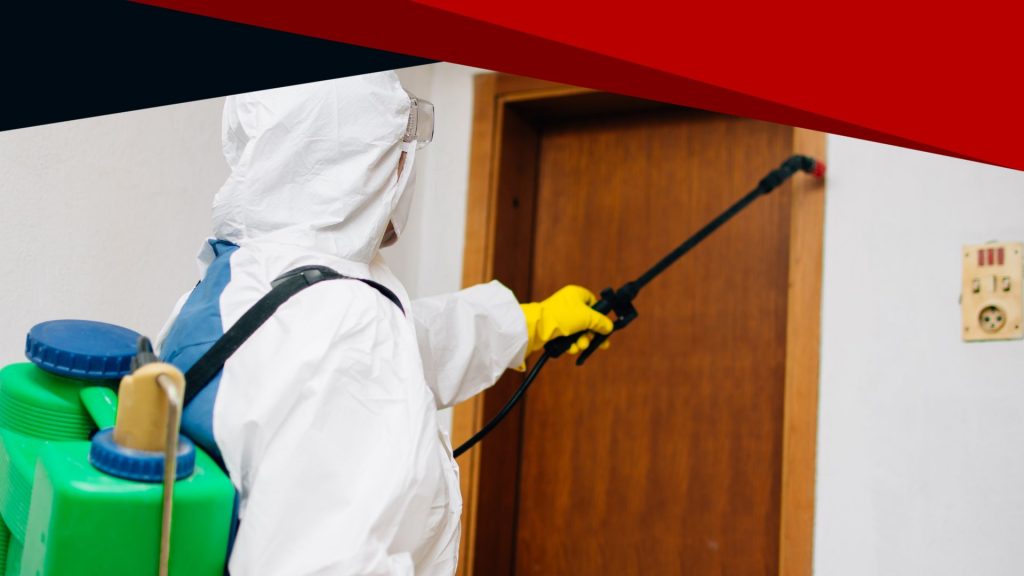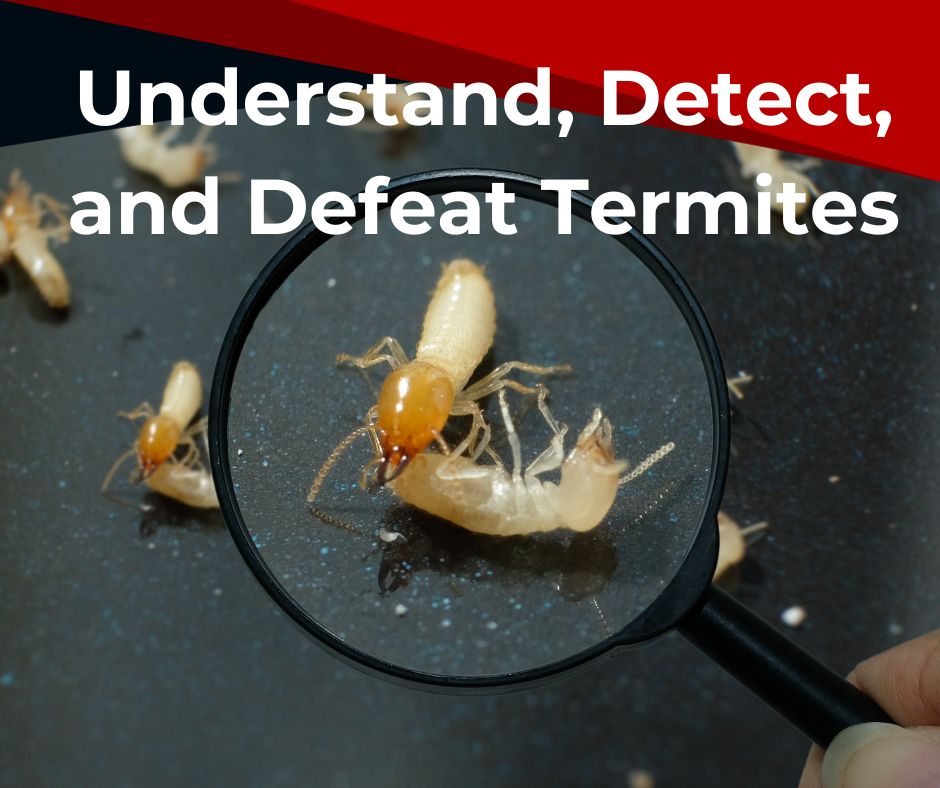Termites Unmasked: A Guide to Understanding, Detecting, and Defeating Termites in the Philippines
Discussing termites may not be as exciting as planning an exotic vacation or exploring the latest technology trends or the latest celebrity gossip (at the time of this writing – it’s about Travis Kelce and Taylor Swift). But believe you me, you need to know these architects of destruction, if you want to protect one of your bigger investments — your property.
Meet Your Common Termites Thriving in The Philippines
In the Philippines, several types of termites coexist, each with its unique characteristics and behaviors. Here’s a brief narrative highlighting these tiny but formidable insects:
Subterranean Termites: Meet the elusive architects beneath the surface.
Subterranean termites are the most common and destructive termite species in the Philippines. Living underground in extensive colonies, these termites build mud tubes to connect their nests to food sources. Their insatiable appetite for cellulose-rich materials, including wood and paper, makes them a significant threat to homes and structures. Subterranean termites are adept at remaining hidden, and their colonies can number in the millions, silently causing damage over time.
Drywood Termites: The stealthy infiltrators of timber.
Unlike their subterranean counterparts, drywood termites don’t require contact with soil. Instead, they infest dry wood directly, making them a threat to wooden structures and furniture. These termites create galleries within the wood, slowly consuming it from the inside out. Drywood termite infestations can be challenging to detect early on, often revealing themselves only when the damage is extensive. Regular inspections are crucial for identifying and addressing drywood termite presence.
Dampwood Termites: Masters of moisture.
Dampwood termites, as the name suggests, thrive in moist conditions. They are commonly found in decaying wood and areas with high humidity. While they are not as prevalent as subterranean termites, dampwood termites can cause significant damage to damp or water-damaged structures. Identifying and addressing moisture issues is key to preventing dampwood termite infestations.
Conehead Termites: The aggressive invaders.
Conehead termites, also known as nasute termites, are a relatively new threat in the Philippines. Highly aggressive and with a distinctive elongated head, these termites can establish colonies both above and below ground. They construct mud nests in trees, on buildings, or even on the ground. Conehead termites are known for their rapid and destructive feeding habits, making early detection and intervention crucial to prevent widespread damage.
Why Knowing Your Termites is a Property Owner’s Power Move

Understanding the common types of termites in the Philippines is not merely an academic pursuit but a crucial aspect of effective termite management. The stakes are high for homeowners, property managers, and anyone seeking to safeguard structures from the silent threat of termite destruction.
1. Tailoring Prevention Strategies
Different termite species exhibit distinct behaviors and preferences in terms of nesting, feeding habits, and environmental conditions. By understanding the common types of termites, individuals can tailor their prevention strategies to address specific vulnerabilities. Subterranean termites, for instance, may require soil treatments, while drywood termites necessitate targeted inspections of wooden structures.
2. Early Detection and Intervention
Each type of termite poses unique challenges when it comes to early detection. Subterranean termites are adept at remaining hidden, while drywood termites may silently consume wood from within. Recognizing the signs of infestation specific to each type enables proactive measures, preventing extensive damage that might otherwise go unnoticed until it’s too late. Regular inspections guided by knowledge of termite species contribute to early intervention.
3. Strategic Use of Control Measures
Effective termite management involves the strategic use of control measures, whether chemical barriers, physical barriers, or baiting systems. Different termite species may respond differently to these measures. For instance, subterranean termites may be effectively targeted with soil treatments, while drywood termites might require localized treatments on infested wood. Understanding the common types of termites ensures that control measures are applied with precision.
4. Environmental Considerations
The Philippines’ unique environmental conditions, characterized by high humidity and diverse ecosystems, play a significant role in termite activity. Different termite species thrive under specific environmental parameters. By comprehending these factors, individuals can make informed decisions about landscaping, construction materials, and environmental modifications that create a less hospitable environment for termites.
5. Evolving Threats
The termite landscape is dynamic, with new species occasionally emerging or existing species adapting to changing conditions. Awareness of these changes allows for flexibility in termite management strategies. For instance, if a new and aggressive species like conehead termites become a threat, understanding their behavior and characteristics is essential for developing effective response plans.
What’s Next – Step-by-Step Guide to Safeguarding Your Property from Termite Infestation

Step 1: Schedule Routine Inspections
Regular inspections are the first line of defense against termite infestation. Conduct thorough inspections at least once a year, paying close attention to areas where termites are likely to thrive. Focus on wooden structures, crawl spaces, and areas with high moisture levels. If you notice any signs of termite activity, such as mud tubes or discarded wings, take immediate action.
Step 2: Address Moisture Issues
Termites thrive in moist environments, so keeping your property dry is crucial. Fix any leaks promptly, repair damaged roof tiles, and ensure proper drainage around the foundation. Use dehumidifiers in damp areas like basements and attics to reduce humidity levels. Well-ventilated spaces are less attractive to termites, so consider installing vents in crawl spaces and attics.
Step 3: Opt for Termite-Resistant Materials
When constructing or renovating your property, choose materials that are less susceptible to termite damage. Pressure-treated wood, naturally termite-resistant woods like cedar and redwood, and composite materials are excellent choices. These materials create a physical barrier that termites find challenging to penetrate, providing an added layer of protection for your home.
Step 4: Implement Chemical Barriers
Consider applying chemical barriers around your property to deter termites. Soil treatments with termiticides can create a protective zone that prevents termites from entering your home. This is a job best left to professionals, so consult with a licensed pest control service to assess your property and determine the most effective treatment.
Step 5: Install Physical Barriers
Physical barriers can be an effective way to keep termites at bay. Install termite shields or metal mesh barriers between the soil and wooden structures. This prevents termites from gaining direct access to your home’s foundation and structural components. Regularly inspect and maintain these barriers to ensure their continued effectiveness.
Step 6: Use Baiting Systems
Termite baiting systems are an advanced and proactive approach to termite control. These systems consist of bait stations strategically placed around your property. Termites are attracted to the bait, consume it, and then carry it back to the colony, eventually eliminating the entire termite population. Consult with a pest control professional to determine if a baiting system is suitable for your property.
Step 7: Seek Professional Assistance
While proactive measures are essential, consulting with a professional pest control service is crucial for effective termite prevention. Professionals have the expertise to identify potential risk factors, assess the extent of any existing infestation, and implement targeted treatments. Learn more about why you should only trust a legit pest control services company to do the work and schedule regular inspections to ensure ongoing protection.
Step 8: Maintain Vigilance
Termite prevention is an ongoing process. Stay vigilant by consistently monitoring your property for signs of termite activity. If you make any changes to your property, such as adding extensions or landscaping, ensure that these modifications do not create conducive conditions for termites. Regular maintenance and a proactive mindset are key to keeping your property termite-free.
By following these steps and staying proactive in your approach, you can significantly reduce the risk of termite infestation and protect your property from the silent but destructive impact of these pests.

Don’t leave the protection of your home to chance—turn to the experts at G and D Pest Control Services.
Our team at G and D Pest Control is equipped with the knowledge, experience, and cutting-edge solutions to safeguard your property from the relentless threat of termites. Schedule a consultation today, and let us assess, strategize, and implement a tailored termite management plan designed to suit the specific needs of your home.

